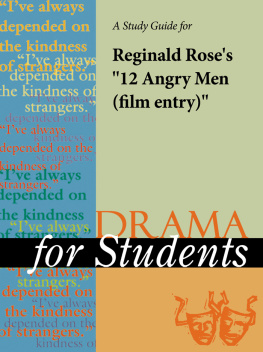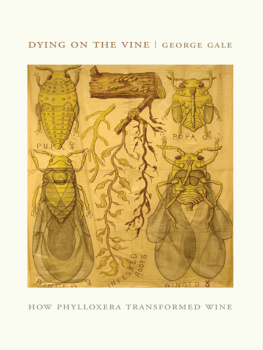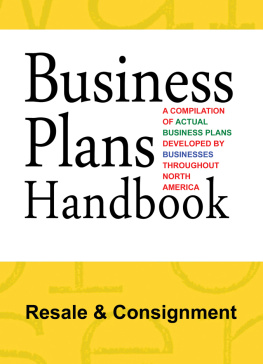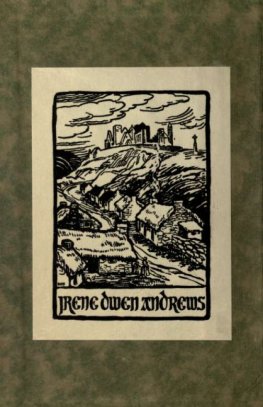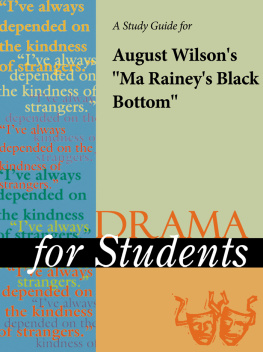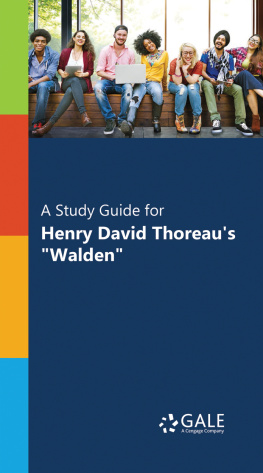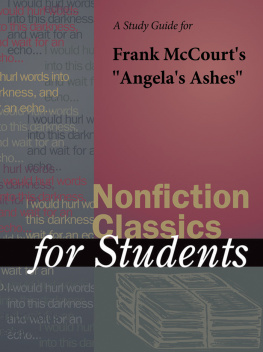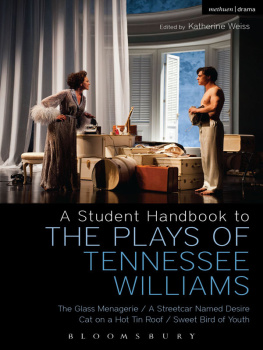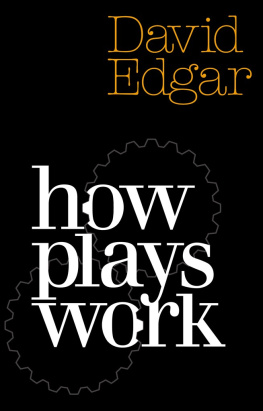TABLE OF CONTENTS
Guide
Drama for Students, Volume 29
Project Editor: Sara Constantakis
Rights Acquisition and Management: Leitha Etheridge-Sims, Tracie Richardson
Composition: Evi Abou-El-Seoud
Manufacturing: Rhonda Dover
Imaging: John Watkins
Product Design: Pamela A. E. Galbreath, Jennifer Wahi
Content Conversion: Katrina Coach
Product Manager: Meggin Condino
2012 Gale, Cengage Learning
ALL RIGHTS RESERVED. No part of this work covered by the copyright herein may be reproduced, transmitted, stored, or used in any form or by any means graphic, electronic, or mechanical, including but not limited to photocopying, recording, scanning, digitizing, taping, Web distribution, information networks, or information storage and retrieval systems, except as permitted under Section 107 or 108 of the 1976 United States Copyright Act, without the prior written permission of the publisher.
Since this page cannot legibly accommodate all copyright notices, the acknowledgments constitute an extension of the copyright notice.
For product information and technology assistance, contact us at Gale Customer Support, 1-800-877-4253.
For permission to use material from this text or product, submit all requests online at www.cengage.com/permissions.
Further permissions questions can be emailed to permissionrequest@cengage.com
While every effort has been made to ensure the reliability of the information presented in this publication, Gale, a part of Cengage Learning, does not guarantee the accuracy of the data contained herein. Gale accepts no payment for listing; and inclusion in the publication of any organization, agency, institution, publication, service, or individual does not imply endorsement of the editors or publisher. Errors brought to the attention of the publisher and verified to the satisfaction of the publisher will be corrected in future editions.
Gale
27500 Drake Rd.
Farmington Hills, MI, 48331-3535
ISBN-13: 978-0-7876-8125-8
ISBN-10: 0-7876-8125-3
ISSN 1094-9232
This title is also available as an e-book.
ISBN-13: 978-1-4144-4941-8
ISBN-10: 1-4144-4941-0
Contact your Gale, a part of Cengage Learning sales representative for ordering information.
Printed in Mexico
1 2 3 4 5 6 7 16 15 14 13 12
12 Angry Men (film entry)
Reginald Rose
1957
Introduction
Sidney Lumet's 1957 film 12 Angry Men has stood as the standard bearer for Hollywood courtroom drama for over fifty years. The story concerns twelve jurors from various walks of life deliberating about the fate of a young man accused of murdering his father. They enter the jury room convinced that the defendant is guilty, but one lone holdout persuades them to reconsider the facts that have been presented, and minute by minute, through argument and discussion, the meaning of the phrase beyond a reasonable doubt makes each man give careful consideration to what he knows. While other films rely on action and special effects to keep audiences interested, 12 Angry Men does the same with strong basic dramatic tools: one room, a dozen skillful actors, a masterful script, and precise directing.
The film was written by Reginald Rose, who wrote the first version specifically for television. After a critically acclaimed live broadcast in 1954, Henry Fonda, the film's star, bought the rights, and he and Rose recruited Lumet, who had directed several of Rose's scripts on television, making it the first feature film in the director's long and distinguished career, which ultimately spanned half a century. In the 1960s, Rose wrote several stage versions of the story. Over the years, it was adapted to fit alternate circumstances, for a female cast (Twelve Angry Women) and for a mixed-gender cast (Twelve Angry Jurors), and it has been performed in hundreds of theater productions. The last version Rose wrote was for the play's Broadway debut in 2004, fifty years after its initial live broadcast.
Plot Summary
The film begins with an outside scene. It is a common technique to add outdoor footage to a filmed version of a stage play, opening the film up beyond the limits of live theater.
To the sound of street traffic, the camera pans up the pillars in front of the New York Supreme Court building in Manhattan to show a portion of the motto inscribed above the door: The true administration of justice is the firmest pillar of good government.
A brief scene in the hall of the court building then shows several people: a man with a briefcase, then a nervous man, and then a jaunty man leaving a phone booth and uniting with a happy family. None of these people are relevant to the story to come.
In courtroom 228, the judge gives the jury its final instructions before its members go into deliberation after a six-day trial. He explains the parameters of the case: one man is dead and another man's life is in the balance, since a death penalty is mandatory in the case of a guilty verdict. The judge also explains the principle of reasonable doubt, which will play an important role in the discussions to come. Two alternate jurors are excused, and the jurors retire to the jury room. The credits roll as they enter it.
They open the windows, since it is expected to be the hottest day of the year. When the guard leaves, he locks them in, which Juror #5 comments on.
They elect to sit around the deliberation table in the order of their juror numbers. The general consensus is that the defendant will be found guilty. Juror #12, for instance, comments that he was impressed with the case the prosecuting attorney put forth, which Juror #11 supports with the comment that he did an expert job.
They are so certain that they all agree to start with a vote. That first vote, however, produces one vote for not guilty from Juror #8. Jurors #3, 7, and 10 are very vocal in their amazement at #8's vote. Juror #8 admits that he is not convinced of the defendant's guilt or innocence, that he just wants to talk about it.
At Juror #8's suggestion, they all agree to deliberate for an hour before rushing to judgment. When Juror #8 lists the hardships of the defendant's life, Juror #10 counters with the claim that they have it too easy, a comment that seems to refer to poor people in general. Juror #12 suggests that they each speak for a moment, telling everyone, It's up to us to convince this gentleman that he's wrong and we're right.
Juror #3 takes out his notebook and lists the facts of the case. An old man who lived downstairs from the crime scene heard a fight between a father and his eighteen-year-old son. He heard the defendant shout, I'll kill you, then he heard a body hit the floor. He ran to his front door in time to see the defendant running down the stairs.
Juror #4 follows up with inconsistencies with the defendant's story: he claimed to have gone to a movie that night but could not state what show he saw. Others pitch in to recall the testimony of the woman across the street, who testified that she actually saw the defendant kill his father while an empty elevated train passed between their two apartments.
Film Technique
- One technique that Lumet employs often in this film is the use of a wide-angle lens, which allows cinematographer Boris Kaufman to capture all of the actors at once. This technique appears early, in the courtroom. One shot shows all twelve jurors, two alternates, the judge, the bailiff, the guard, and the court stenographer. Throughout the film, the film shows jurors clustered together in groups of two or three, but it frequently reverts to the wide shot, showing all twelve jurors, either from the head of the table (shot from behind Juror #1) or from the foot (shot from behind Juror #7).

